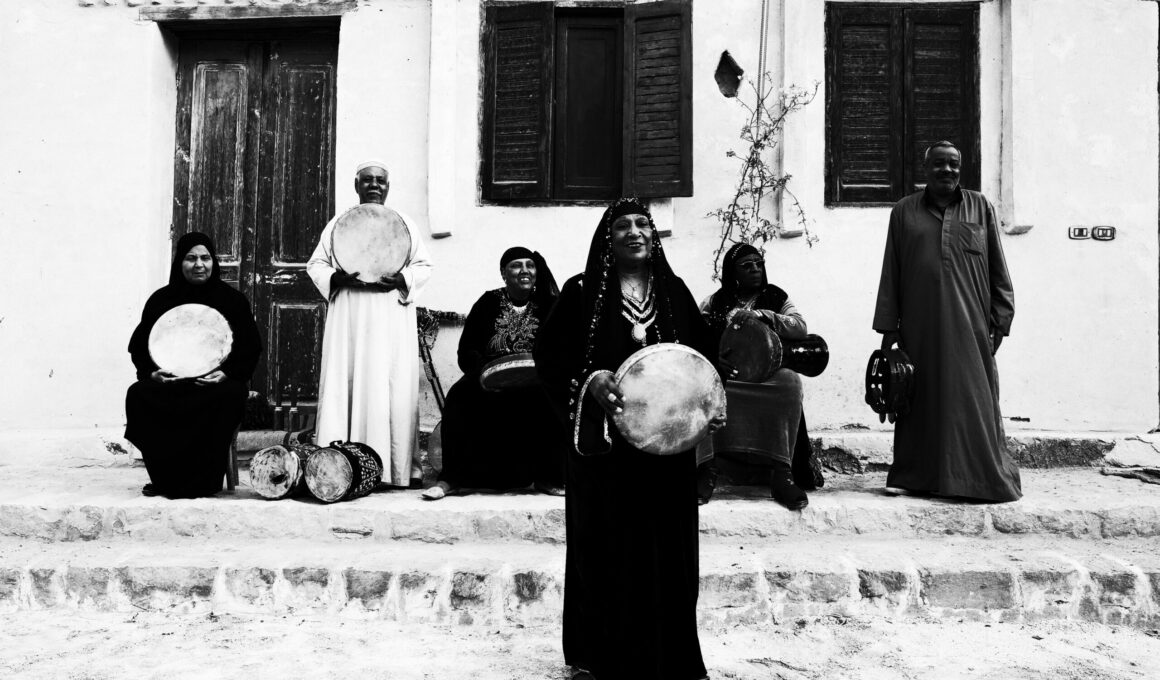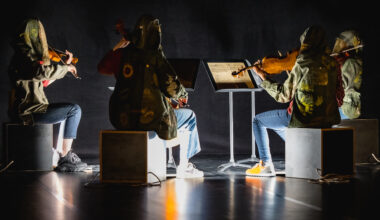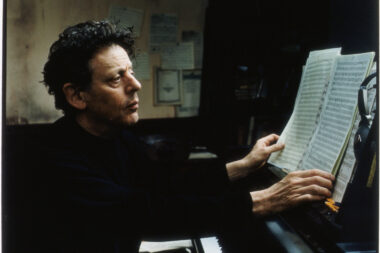Mazaher is one of the few collectives that still practise the historical healing ritual zār in their hometown of Cairo through singing, polyrhythmic percussion, tambura lute, and dance. Performed by and for mostly women, the music offers an intensifying dynamic that enables spiritual experiences. The goals of zār are inner purification, harmony with oneself, and resilience. However, it is to be understood more as a community ritual rather than in accordance with the Western logic of self-improvement.
Mazaher is one of the rare ensembles in which women play a leading role and are connected to a most ancient tradition practiced in several countries in the region. The musicians of Mazaher: Um Sameh, Um Hassan, Nour El Sabah are among the last remaining Zar practitioners in Egypt. The music presented by Mazaher is inspired by three different styles of the Zar music in Egypt: the Egyptian or Upper Egyptian Zar, Abul Gheit Zar and the Tamboura or African Zar. Zar is a community healing ritual of singing, polyrhythmic drumming and dancing whose tradition is carried mainly by women (men have the second roles) and whose main participants are women. It’s distinctively different from other Egyptian music traditions.
This ritual has been widely misconceived as a form of exorcism. However, the goal is to harmonize the inner lives of the participants. The Zar is a space in which the human being can work out the tensions and frustrations of social constraints, which limit their movements, their dress, their voices and even their dreams. It is an ancient purification rite and it aims at pacifying numerous spirits. Communication with unseen spirits is driven by the insistent and varied drum rhythmic interaction, which can lead to an altered state of consciousness and even, trance. The experience can be cathartic, a physical and spiritual purification that leaves one calm and ready to face the world again.
A featured instrument in the Zar ritual in Egypt is the tamboura, the six-string lyre, which, like the Zar practice itself, exists in various forms in a an area stretching across East Africa to the Arabian Peninsula and Persia. Although this sacred instrument is pictured on the walls of tombs and temples of the Ancient Egypt. Other instruments are the Mangour, a leather belt sewn with many goat hooves and various percussion instruments.
Mazaher
Thursday, 2.3.2023 | Doors: 20:00 | Starts 20:30 CET
HAU Hebbel am Ufer (HAU1) | Stresemannstraße 29 in 10963 Berlin








